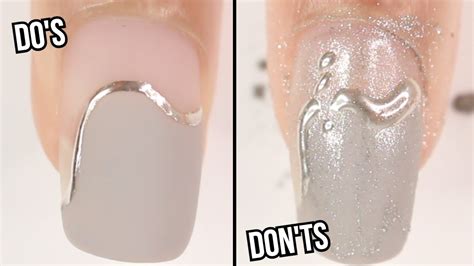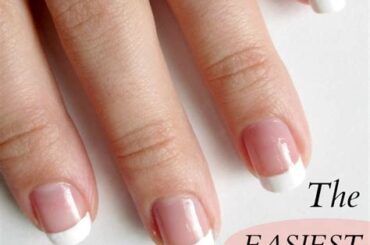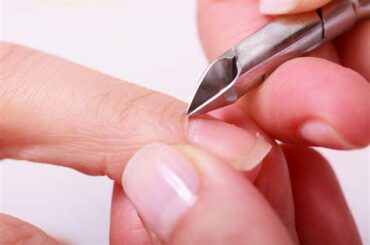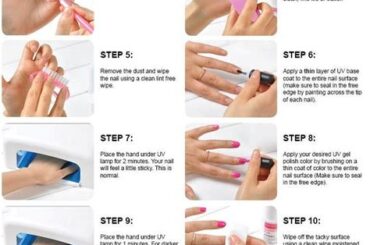Get expert tips on nail extension types, aftercare, and common mistakes. Learn how to maintain healthy natural nails and minimize potential risks. Know when to remove nail extensions.
Understanding Nail Extensions
When it comes to nail extensions, there are a few key points to keep in mind in order to fully understand the process and what it entails. Nail extensions are artificial enhancements applied to the natural nails in order to add length or provide a stronger base for nail polish. They can be made from a variety of materials, such as acrylic, gel, or fiberglass.
It’s important to understand that the process of applying nail extensions involves proper preparation of the natural nails. This includes cleaning the nails, filing them to the desired shape, and applying a primer to help the extensions adhere. Additionally, the application process requires skill and precision in order to achieve the desired look and durability.
Understanding nail extensions also involves being aware of the aftercare required to maintain them. This includes avoiding excessive exposure to water, using gloves when doing tasks that may cause damage to the extensions, and getting regular touch-ups to keep them looking fresh.
Choosing the Right Nail Technician
When it comes to getting nail extensions, one of the most important decisions you will make is choosing the right nail technician. Your nail technician is the person responsible for the health and appearance of your nails, so it’s crucial to find someone who is skilled, experienced, and knowledgeable. It’s important to do your research and ask for recommendations from friends or family members who have had positive experiences with nail technicians.
Once you have a few potential nail technicians in mind, take the time to schedule consultations with each of them. During these consultations, pay attention to the cleanliness of the salon, the technician’s communication style, and their level of professionalism. It’s also a good idea to ask about their experience and training, as well as their familiarity with different nail extension techniques and products.
Overall, the most important thing to look for in a nail technician is someone who prioritizes the health and safety of your nails. A good nail technician will take the time to assess the condition of your natural nails before applying any extensions, and they will be honest with you about whether or not nail extensions are a suitable option for you. Additionally, they should be able to provide you with thorough aftercare instructions to help you maintain the health and longevity of your nail extensions.
Preparing Your Natural Nails
When it comes to getting nail extensions, one of the most important steps is preparing your natural nails. This process involves ensuring that your nails are clean, healthy, and ready to support the extension. To start, it’s crucial to remove any existing nail polish and thoroughly clean your nails with a gentle nail polish remover. This will help to eliminate any traces of old polish or debris that could affect the application of the extensions.
Next, it’s essential to trim and shape your nails to your desired length and style. This will not only provide a clean canvas for the extension, but also ensure that your natural nails are uniform and free of any rough edges. Additionally, gently buffing the surface of your nails can help to smooth out any ridges or imperfections, creating a perfect base for the extension to adhere to.
Lastly, it’s important to moisturize and hydrate your nails and cuticles to keep them healthy and strong. Using a nourishing cuticle oil or cream can help to prevent dryness and cracking, providing a solid foundation for the extension to be applied. By following these essential steps, you can ensure that your natural nails are fully prepared to support and enhance the look of your nail extensions.
Selecting the Best Nail Extension Type
In the world of nail extensions, there are various types to choose from. It’s important to select the best nail extension type that suits your lifestyle and preferences. One popular option is acrylic extensions, which are known for their durability and strength. Another option is gel extensions, which offer a more natural look and are less likely to cause damage to the natural nails. Lastly, there are also dip powder extensions, which are known for their long-lasting properties and easy removal process.
When selecting the best nail extension type, it’s essential to consider the maintenance and upkeep required. Acrylic extensions may require more frequent fills, while gel extensions may need to be cured under a UV or LED lamp. Dip powder extensions, on the other hand, require a specific removal process using acetone. Knowing the maintenance routine for each type can help you make an informed decision.
Furthermore, it’s important to consult with a professional nail technician to determine the best nail extension type for your individual needs. They can assess the condition of your natural nails and provide recommendations based on your lifestyle and desired outcome. By seeking expert advice, you can ensure that you select the best nail extension type for long-lasting and beautiful results.
Proper Aftercare for Nail Extensions
The Dos and Don’ts of Nail Extensions
After getting a set of beautiful nail extensions, it’s important to properly care for them to ensure they last as long as possible. One of the most important aftercare steps is to keep your nails dry. Excessive exposure to water can weaken the bond between the natural nail and the extension, causing them to lift and potentially break. Be sure to wear gloves while doing dishes or cleaning to protect your nails from prolonged contact with water.
Another crucial aspect of aftercare for nail extensions is regular maintenance. This includes getting fills or touch-ups every 2-3 weeks to keep your nails looking fresh and prevent any lifting or breakage. Skipping or delaying maintenance appointments can lead to more extensive damage and ultimately require the removal of the extensions.
In addition to maintenance, avoiding harsh chemicals is key to maintaining the integrity of your nail extensions. Avoiding products containing acetone or other strong solvents is important, as these can break down the materials used in the extensions and weaken them. Opt for gentle, non-acetone polish removers and avoid using your nails as tools to prevent unnecessary stress on them.
Avoiding Common Mistakes in Nail Extension Maintenance
Avoiding Common Mistakes in Nail Extension Maintenance
When it comes to maintaining your nail extensions, there are several dos and don’ts that you need to keep in mind in order to keep your nails looking their best. One common mistake that people make is not properly protecting their nail extensions when engaging in activities that could potentially damage them. Whether it’s gardening, washing dishes, or participating in sports, it’s important to wear gloves to protect your nail extensions from unnecessary wear and tear.
Another mistake to avoid is neglecting proper aftercare. This includes keeping your nail extensions clean and dry, and avoiding excessive exposure to water and chemicals. Failing to follow these aftercare steps can lead to lifting, breakage, and infection. It’s crucial to follow the aftercare instructions provided by your nail technician in order to maintain the longevity and health of your nail extensions.
Lastly, one key mistake to steer clear of is attempting to remove your nail extensions on your own. Improper removal can cause damage to your natural nails and lead to pain and discomfort. It’s best to have your nail extensions professionally removed by a qualified nail technician to ensure that your natural nails remain healthy and undamaged.
Potential Risks and How to Minimize Them
The Dos and Don’ts of Nail Extensions
When getting nail extensions, it’s important to be aware of the potential risks involved. One of the main risks is the possibility of damaging your natural nails. This can occur if the nail technician applies the extensions too tightly or if they are not properly maintained. Another risk is the development of fungal or bacterial infections if the extensions are not properly sanitized or if moisture becomes trapped underneath them. Additionally, overexposure to certain chemicals used in the application and removal process can also pose health risks.
However, there are steps you can take to minimize these risks. First and foremost, it’s crucial to choose a reputable and experienced nail technician who follows proper sanitation practices. It’s also important to communicate any concerns or sensitivities you may have to the technician before the application process begins. Proper aftercare, including keeping your extensions dry and clean, can also help minimize the risk of infections and damage to your natural nails. Additionally, paying attention to the products being used and ensuring they are of high quality can help minimize the risk of exposure to harmful chemicals. Keeping your nails and the surrounding skin well-moisturized can also help reduce the risk of irritation and damage.
By being aware of the potential risks and taking proactive measures to minimize them, you can enjoy beautiful nail extensions without compromising the health of your natural nails or putting yourself at risk for infections or other health issues.
Tips for Maintaining Healthy Natural Nails
Keeping your natural nails healthy is an important part of maintaining nail extensions. One important tip for maintaining healthy natural nails is to keep them moisturized. Using a good quality nail and cuticle oil regularly can help keep your natural nails hydrated and prevent them from becoming dry and brittle.
Another important tip is to avoid using your natural nails as tools. Using your nails to open cans, peel off stickers, or perform other tasks can cause damage to your natural nails and lead to breakage. It’s important to use the proper tools for these tasks and avoid putting unnecessary strain on your nails.
Lastly, it’s important to give your natural nails a break from nail extensions every now and then. Allowing your nails to breathe and grow without extensions can promote their overall health. It’s also important to properly remove nail extensions when it’s time for a break, rather than pulling or picking them off, which can cause damage to the natural nails.
Knowing When to Remove Nail Extensions
Knowing When to Remove Nail Extensions
One of the most important aspects of getting nail extensions is knowing when it’s time to remove them. While nail extensions can last for several weeks, it’s crucial to pay attention to the signs that indicate it’s time for removal.
First and foremost, it’s essential to monitor the growth of your natural nails. As your nails grow, the gap between the cuticle and the nail extension will become more noticeable. This is a clear indication that it’s time for a fill-in or removal.
Additionally, if you start to notice any signs of damage or lifting of the nail extensions, it’s important to book an appointment for removal. Ignoring these issues can lead to further damage and potential infections.
Frequently Asked Questions
What are the dos of nail extensions?
Dos of nail extensions include keeping your nails clean, using cuticle oil, and getting regular fills to maintain the appearance of your nail extensions.
What are the don’ts of nail extensions?
Don’ts of nail extensions include picking or pulling at your extensions, using your nails as tools, and exposing your nails to harsh chemicals.
How often should I get fills for my nail extensions?
It is recommended to get fills for your nail extensions every 2-3 weeks to maintain their appearance and prevent lifting.
What is the best way to care for nail extensions at home?
The best way to care for nail extensions at home is to keep them clean, apply cuticle oil regularly, and avoid using your nails as tools for opening or prying things.
Are there any health risks associated with nail extensions?
Improper application or removal of nail extensions can lead to nail damage, bacterial or fungal infections, and allergic reactions to the materials used. It’s important to go to a reputable salon and follow proper aftercare to minimize these risks.
Can nail extensions damage my natural nails?
If nail extensions are improperly applied or removed, they can cause damage to the natural nails. It’s important to go to a trained and experienced nail technician to minimize the risk of damage.
What are some alternatives to traditional nail extensions?
Some alternatives to traditional nail extensions include gel polish manicures, dip powder manicures, and nail wraps. These options can provide a similar appearance without the use of extensions.





